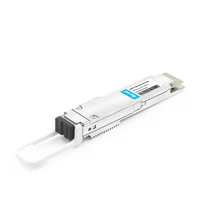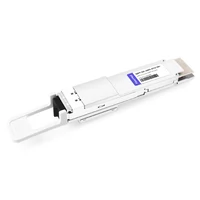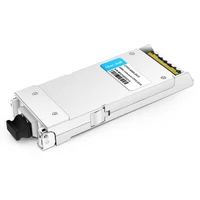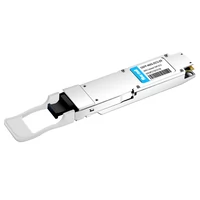The combination of DWDM and routing technology is the key to the implementation of the 400G QSFP-DD DWDM optical module. In recent years, coherent DWDM products are ready to keep pace with the introduction of 400G DWDM coherent pluggable optical modules.
This paper will study the evolution of coherent DWDM technology, so as to further study the details behind the 400G DWDM coherent pluggable optical module, and explore how to realize the integration of DWDM and routing technology.
Table of Contents
ToggleWhy does 400G DWDM QSFP-DD ZR Use Coherent Technology?
Coherent receive optical module refers to the optical module with coherent design at the receiving end, which is mainly used in the second generation transmission technology of WDM system.
The first generation of WDM does not use the technology of coherent reception.
- Why use WDM?
- Why use DWDM?
- Why DWDM needs coherent technology when increasing bandwidth?
When fiber optic communication was first proposed in the 1970s, it was said that fiber optics had almost unlimited bandwidth, almost zero loss, and almost zero cost. There was great industrial value.

Now it has basically realized low cost and low loss. But a large capacity for long distances has not been achieved.
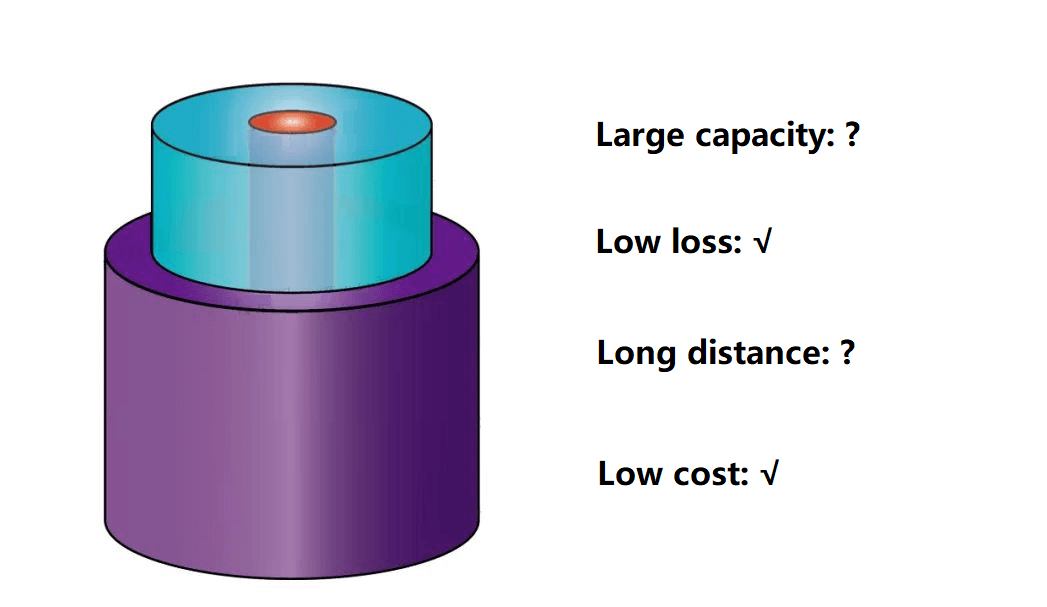
The frequency of light suitable for fiber optic transmission is 190-230THz, which is a large carrier frequency. However, due to the limitation of signal modulation technology and demodulation technology in the industry, we can really use the signal bandwidth in tens of GHz, which does not make good use of the huge carrier frequency of light.
Low loss is an important factor to extend the transmission distance. But in reality, the waveguide of the fiber is very small. Because of the required power density of the incoming fiber, the waveguide cannot be too large or it will burn up or excite nonlinear effects. When the modulated signal between the signal-to-noise ratio and the receiving end, can achieve hundreds or even thousands of kilometers of transmission, the fiber can actually only perform about a hundred kilometers of transmission distance, which is a waste for the signal.
How to increase the capacity
If you can’t increase the bandwidth of the modulated signal, you can use wavelength division technology to transmit more channels.
How to extend the transmission distance of optical fiber
You can use relay technology to transmit one section at a time until the signal-to-noise ratio of the optical signal reaches its limit.
Wavelength division
It can expand the capacity.
Relay
It can extend the equivalent transmission distance. The optical amplifier using EDFA for relaying was an excellent choice for low-cost relaying in the 1990s.
To accommodate the low-cost EDFA for relay amplification, it is necessary to place multiple wavelengths in the wave fraction within the gain spectrum of EDFA.
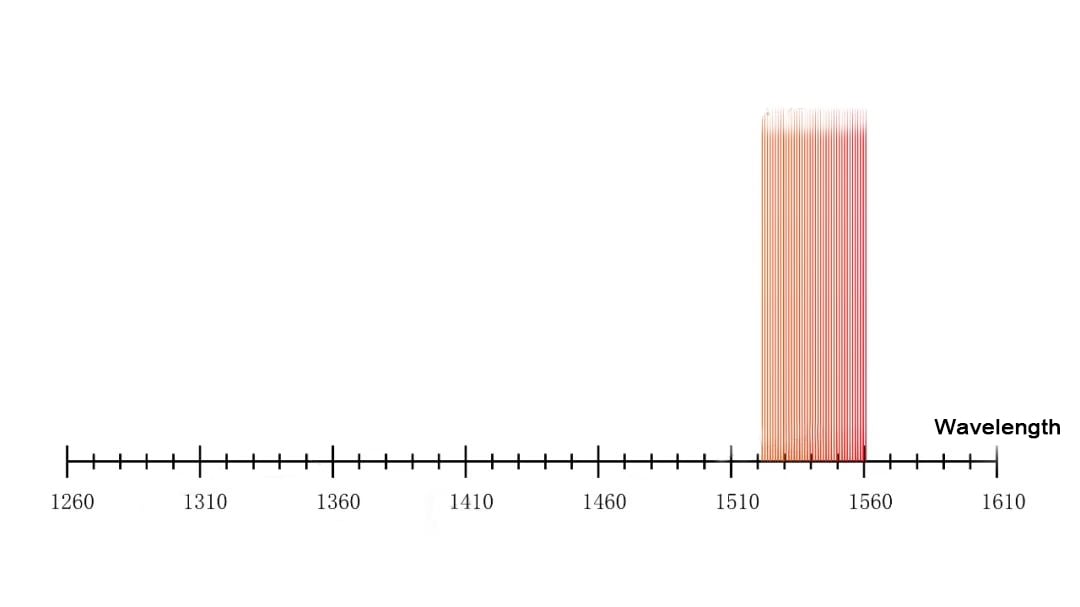
Early wavelength division addressed both the challenge of increasing transmission capacity under limited industrial conditions and the challenge of using low-cost relays to extend transmission distances.
But as fiber capacity continues to increase, there are two paths to increasing the number of wavelengths and increasing the rate per wavelength.

But it creates new problems.
First, increase the number of wavelengths. These wavelengths need to be controlled within the gain peak of the optical amplifier, which results in smaller and smaller wavelength intervals.
The second one is to increase the rate per wavelength. The rate is getting higher and higher from 622M, 1.25G, and 2.5G, and the transmission distance is getting shorter and shorter. The reason is that the sensitivity of the receiver side deteriorates, while the power of the transmitter side cannot be continuously increased, and is limited by the total power of the incoming fiber. There is also a disadvantage that the higher the signal rate, the greater the spread of the frequency domain and the need to widen the wavelength interval.
If the distance is shorter, the number of wavelengths will decrease. This is a contradiction.
To solve this problem, we have to improve the sensitivity at the receiving end. It is possible to increase the rate and still maintain the characteristics of long transmission distance.
How to improve the sensitivity? Increase the signal, or reduce the noise.
Increasing the signal can be achieved by constructive interference. And reducing noise can be achieved by differential calculations or by destructive interference. At the receiving end, adding a signal interference design can improve the signal-to-noise ratio and optimize the sensitivity.
The interference of the signal is phase dependent. Since the phase is controlled, what a waste to make a set of 0/180° phase modulation. You can use 45° and 225°, superimposed with 135°/315°, two sets of signal modulation. This would double the amount of bits transmitted without increasing the bandwidth of the signal.
Wavelength division multiplexing of IMDD based on NRZ improves the rate of each wavelength. Because the sensitivity is getting worse, the transmission distance is getting shorter. The higher the signal rate (bandwidth in essence), the larger the broadening of the frequency domain, and the need to widen the wavelength interval, affecting the increase of the number of wavelengths.
Based on the modulation format of DP-QPSK, the bit rate can be increased without increasing bandwidth. Without increasing the bandwidth, the frequency domain does not need to be broadened, so the deployment of the number of wavelengths is not affected.
Based on coherent reception, through interference, the signal is improved, the noise is suppressed, the signal-to-noise ratio is improved, and the transmission distance will not become shorter, but will be extended.
Back to our main line again with coherent optical modules, increasing capacity and extending distance. This is the technical competitiveness of the coherent optical module used in the backbone of the core network with large capacity and long distance.
Coherent optical modules, there are several important branches of technology.
- Phase control, which requires the industry to have the ability to achieve volume manufacturing at low cost. These technologies matured around 2005, and the coherent module entered the industrialization phase around 2010.
To interfere at the receiving end, a local oscillator is needed, and light is electromagnetic waves, so it is also called local oscillating light (LO). The purer the frequency, the better the amplification after interference, which is a requirement for the narrow line width of the LO. As the coherent module is used in the wavelength division system, it is able to tune the wavelength, it has a relatively strong adaptability, which is the reason why LO needs wavelength tunable.
Where there is a need for interference, it is usually called a mixer. In the early days, silicon-based silicon oxide PLCs were used for this purpose, which had low losses but could not integrate detectors. Later, InP was used, and then silicon light, both semiconductors can integrate the mixer and detector.
To resolve the relationship between the phase and the amplitude of the detector, the amount of arithmetic is very large, and with the industrialization of coherent optical modules, DSP also began to become an important component of the module.
DSP, digital signal processing, takes the individual information transmitted by the optical signal and uses algorithms to parse the signal after analog-to-digital conversion. Algorithm is an important work, including how to calculate dispersion and compensation, how to carry out polarization dispersion prediction and compensation, and how to calculate frequency deviation, and so on.
In addition to the algorithm, another difficulty of DSP is the high power consumption. One route to reduce power consumption is through the use of semiconductor high-precision process capability. Around 2010, DSP uses CMOS process of about 65nm. By 2023, DSP technology can already reach 5nm, 7nm, and power consumption is reduced significantly.
Coherent optical modules have IQ modulators, dual polarization, dual polarity modulation, and equivalent four amplitude modulators in order not to waste phase control and polarization control.
Earlier years IQ modulators used lithium niobate, but the size was very large. Later there was a miniaturized modulation technology based on InP, the size is only one-third of lithium niobate. Then later there was silicon photonics integration, silicon photonics integration can send IQ modulation, ICR are put together, send and receive together COSA (is later IC-TROSA). The size was smaller.
As the industry continued to develop, the coding efficiency of QPSK was further improved. With QAM8, QAM16 is industrialized to achieve more bit efficiency.
The application scenario of coherent optical modules also began to have a new expansion. Outside the traditional telecom core network backbone, the interconnection between data in, there is also a trend of large capacity and long distance. WDM used in the early days of DCI data center interconnection is a direct transfer and IM/DD of WDM.
The same contradictions exist in continuing to increase capacity as in the previous backbone network. Now, learning from previous experience, coherent technology can further increase capacity without shortening distance.
This is the beginning of the 400G ZR for the second generation of DCI.
The Development of DWDM Coherent Optics
In less than 10 years, the DWDM module has made great progress, optical devices become smaller and smaller, and the speed is higher and higher. It has increased 10 times in the same period of time: from 40G in 2011 to 400G. By 2022, 800G pluggable optical modules have already appeared on the market.

FiberMall QSFP-DD-400G-DCO-ZR+
The introduction of coherent optical technology is one of the most important innovations in the development of the DWDM system. Coherent optical equipment uses advanced optical devices and digital signal processors (DSP) to send and receive complex lightwave modulation, so as to realize high-speed data transmission. At a very high level, coherent modulation remains the driving force behind high-speed optical devices, including 400G and higher-rate coherent transceivers.
The first commercially available coherent DWDM system is 40G, followed by 100G. These systems are based on line cards and chassis. They can support many line cards in each system and occupy the same space as 10G rate products. It is major progress. Now they can transmit 100G rate and longer transmission distance. Over time, line card speeds have increased to 200G and beyond, but the industry is approaching an inflection point with the advent of cloud providers.
Specifically, as cloud provider networks begin to grow exponentially, there is increasing pressure on manufacturers to create smaller, faster and cheaper network components. It was this inflection point that led to the emergence of optical transponder DWDM systems. The optical transponder system eliminates the chassis and line card. It is a physically small stand-alone system, a small data center switch with a height of 1 or 2RU (1.5″-3″). The key to the feasibility of the optical transponder package is the separation of the two main components in coherent optical transmission: the optical device (laser, receiver, modulator, etc.) and the DSP (digital signal processor).
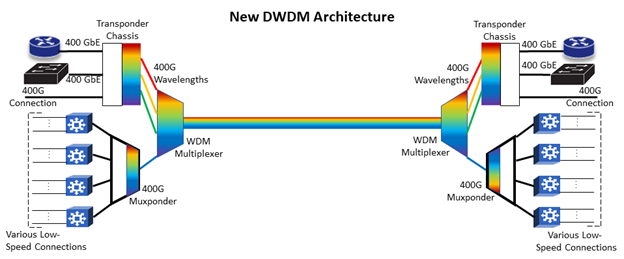
And these innovations have given rise to the pluggable CFP2-ACO (Analog Coherent Optics), a pluggable DWDM module with a relatively small CFP2 size. DSP technology is also evolving so that a single DSP chip can support multiple CFP2-ACO modules. Thus, by placing multiple DSPs in the optical transponder, manufacturers produced systems capable of transmitting 2Tbps (20x100G client connections) in 2 rack units (3″). In contrast, a chassis-based system would require 12 rack units. In addition to saving space, they are more energy-efficient.
Of course, the above is a very simple explanation of coherent signal transmission. In fact, the purpose of developers is to convert digital signals into analog signals to transmit data and convert analog signals back to digital signals at the other end.
However, the CFP2-ACO can only process analog signals, but can not process digital signals. It receives the coherent analog signal to be transmitted from DSP or transmits the received coherent analog signal to DSP to convert it into a digital signal, as shown in the figure.
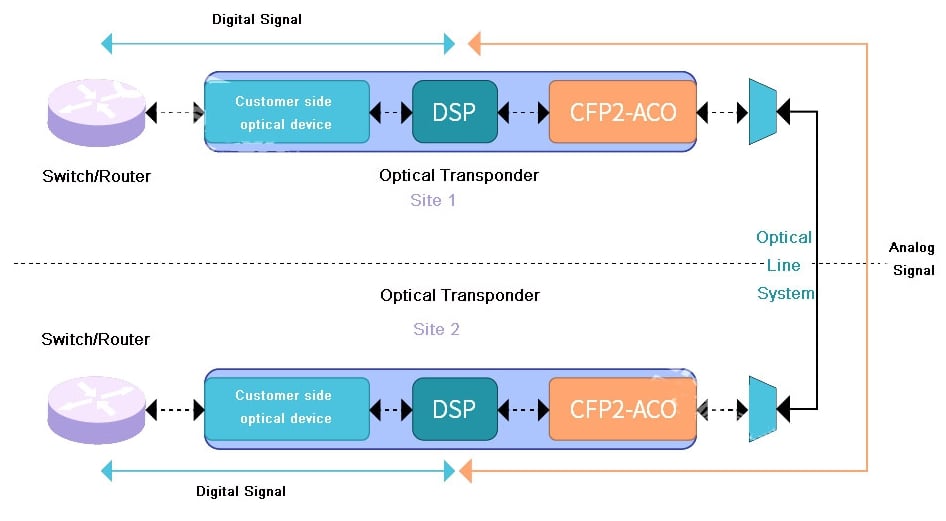
CFP2-ACO DWDM transmission system
CFP2-ACO system has been widely used in the whole industry and has become the standard form of optical transmission in almost every cloud provider’s network.
At the same time, with the introduction of CFP2-DCO, pluggable coherent DWDM optics continue to develop. “D” stands for “digital” in digital coherent optics. The developers of coherent optics once again reduced the size and power consumption of components, so both optical devices and DSP are placed in CFP2. In this way, there is no need to use the rack to accommodate the DSP, so coherent DWDM transmission can be carried out directly from the router or switch, which is the turning point of the real integration of DWDM and router.
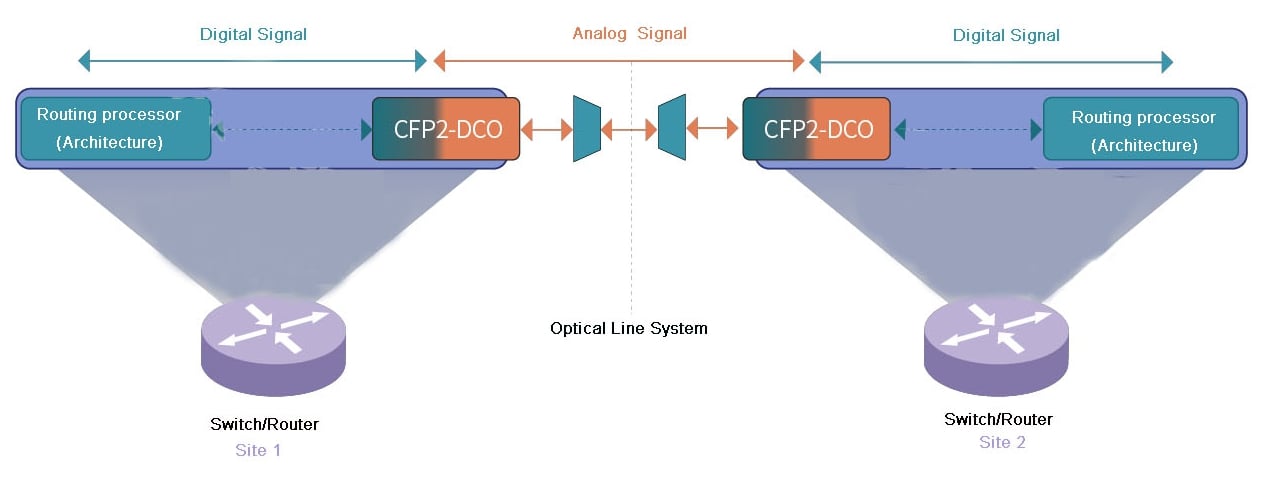
DCO DWDM transmission in router or switch
Now, coherent optical modules have evolved to 400G ZR and 400G ZR+ in QSFP-DD packages, using the same technology as CFP2-DCO but in a smaller size. Such a compact package housing 400G DWDM coherent optical devices do provide a viable solution for the convergence of routing and DWDM.
400G DWDM Coherent Optical Transceiver Standards
400G has evolved to the point where there are several standards. These include 400ZR, 400G ZR+, 400G OpenROADM, and 400G OpenZR+, which go in slightly different directions.
First was the Optical Interconnect Forum (OIF), which created the 400ZR standard. 400ZR targets edge and relatively short-range (within 120km) data center interconnect applications. Around the same time, the OpenROADM multi-source protocol also defined specifications for 400G DWDM pluggable, with specifications focused on service provider networks, such as long-haul optical transport (>120km), advanced forward error correction (oFEC) and optional data rates (100G, 200G, 300G or 400G). Although additional features can be implemented, more power is required than the 15W specified by ZR. For this reason, the OpenROADM specification is called 400G ZR+.
Eventually, between the two organizations and various optical device manufacturers, they agreed on the best standard for combining OIF and OpenROADM, and called it OpenZR+. By combining the characteristics of each device in the same package, a highly versatile coherent DWDM optical device can be provided, as shown in the figure below.
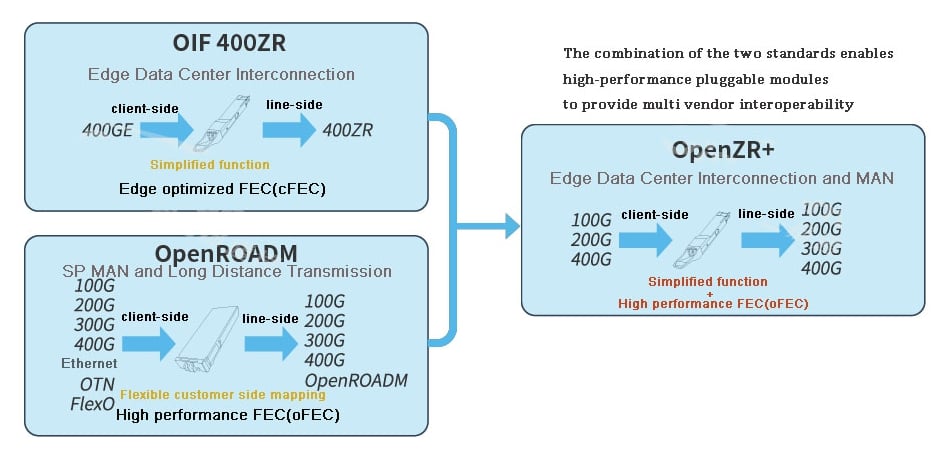
We can see that in the continuous improvement of the packaging, function, and data rate of the optical module, the optical transmission range is getting wider and wider, and the transmission distance is getting longer. Using OpenZR+ standard, 1400km transmission distance can be achieved, which is more than 10 times of 400ZR transmission distance. With the high density 400G DWDM in routers, combined with the simplicity of traffic engineering and the path redundancy of segmented routing, we can expect a major shift in transmission network architecture.
In November 2020, FiberMall was invited to be the first contributor member of OpenZR+ MSA. FiberMall officially invested in coherent optical module development in early 2018, open to strategic cooperation with upstream supply chain to optimize innovation in low-power design and signal modulation model, and achieved significant results. Now we have launched 100G CFP-DCO, 100G CFP2-DCO digital coherent optical modules and 200G DWDM coherent optical transceiver, and 400G DWDM coherent optical transceiver with strict compliance to OpenZR+ standards for data center interconnection and metro networks for ultra-long distance optical transmission.
Related Products:
-
 QSFP-DD-400G-DCO-ZR 400G Coherent QSFP-DD DCO C-band Tunable Optical Transceiver Module
$6000.00
QSFP-DD-400G-DCO-ZR 400G Coherent QSFP-DD DCO C-band Tunable Optical Transceiver Module
$6000.00
-
 QSFP-DD-400G-DCO-ZR+ 400G Coherent QSFP-DD DCO C-band Tunable Optical Transceiver Module
$6500.00
QSFP-DD-400G-DCO-ZR+ 400G Coherent QSFP-DD DCO C-band Tunable Optical Transceiver Module
$6500.00
-
 CFP2-400G-DCO 400G Coherent CFP2-DCO C-band Tunable Optical Transceiver Module
$6500.00
CFP2-400G-DCO 400G Coherent CFP2-DCO C-band Tunable Optical Transceiver Module
$6500.00
-
 OSFP-400G-DCO-ZR 400G Coherent OSFP-DCO ZR C-band Tunable Optical Transceiver Module
$7000.00
OSFP-400G-DCO-ZR 400G Coherent OSFP-DCO ZR C-band Tunable Optical Transceiver Module
$7000.00

